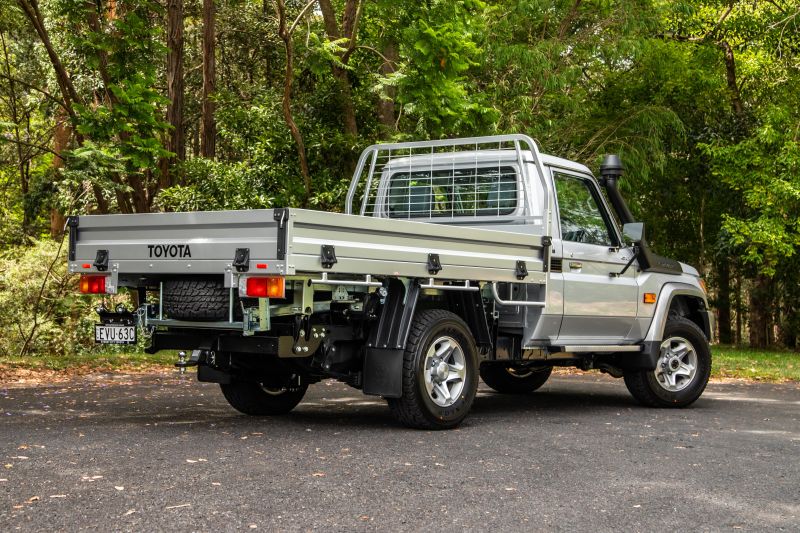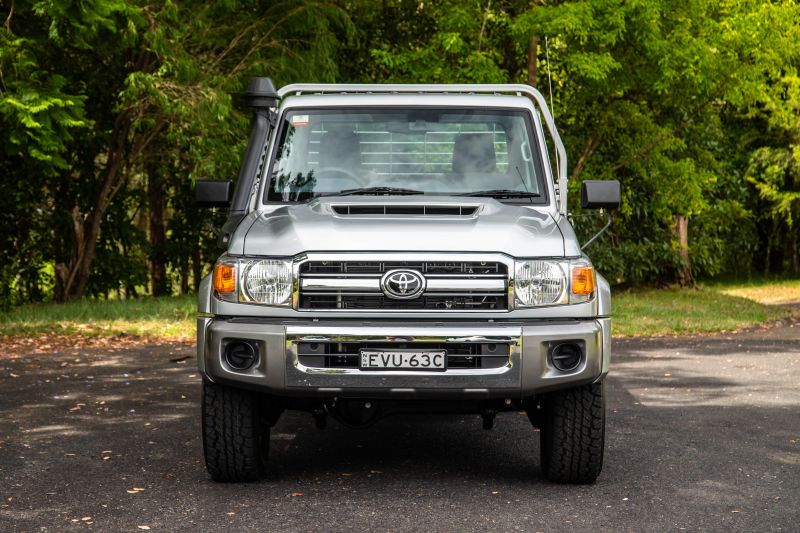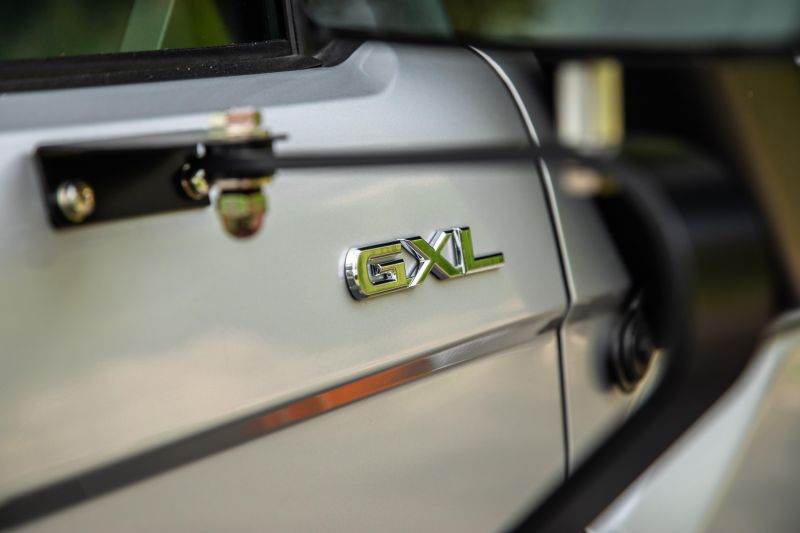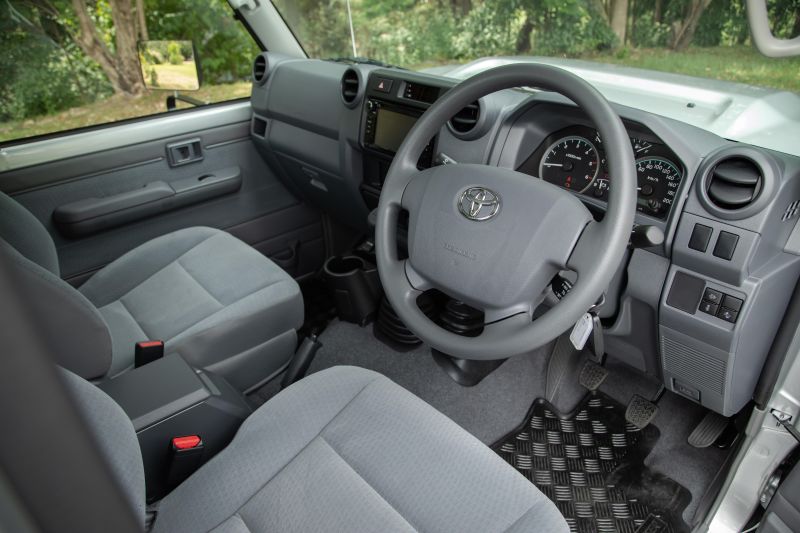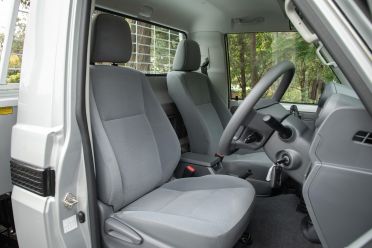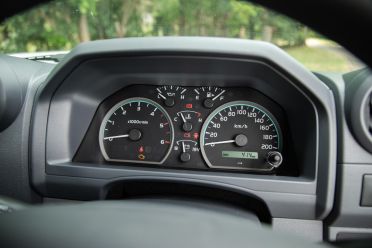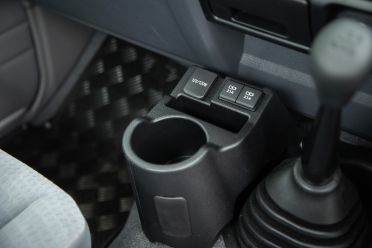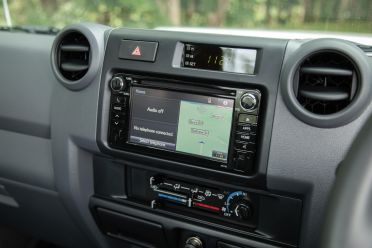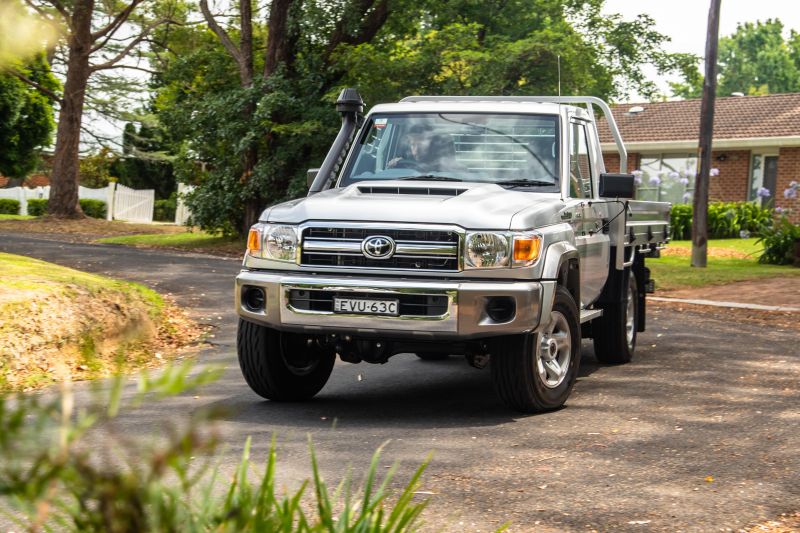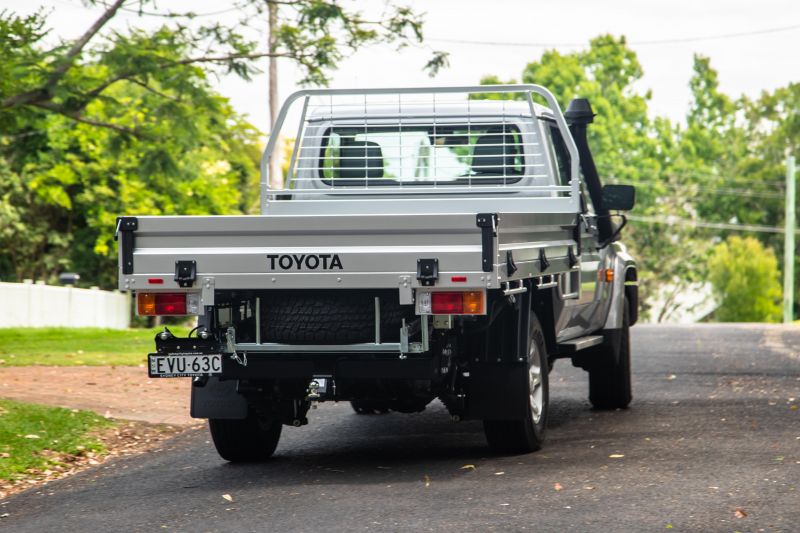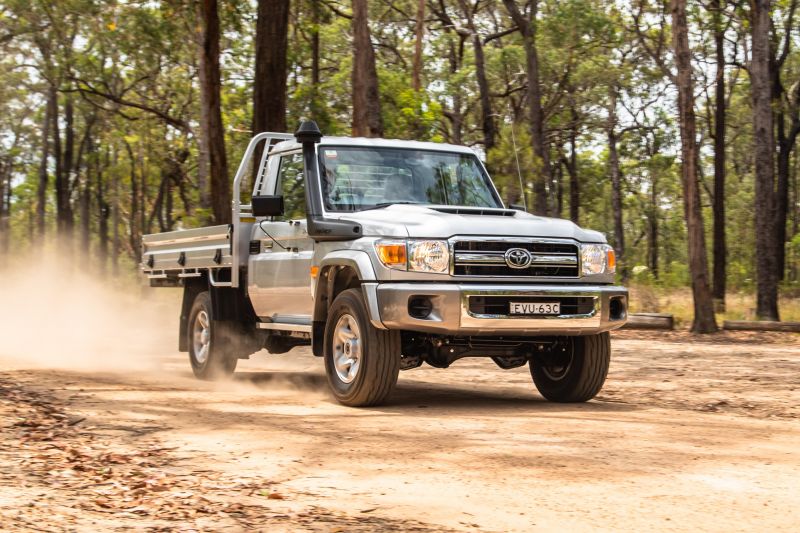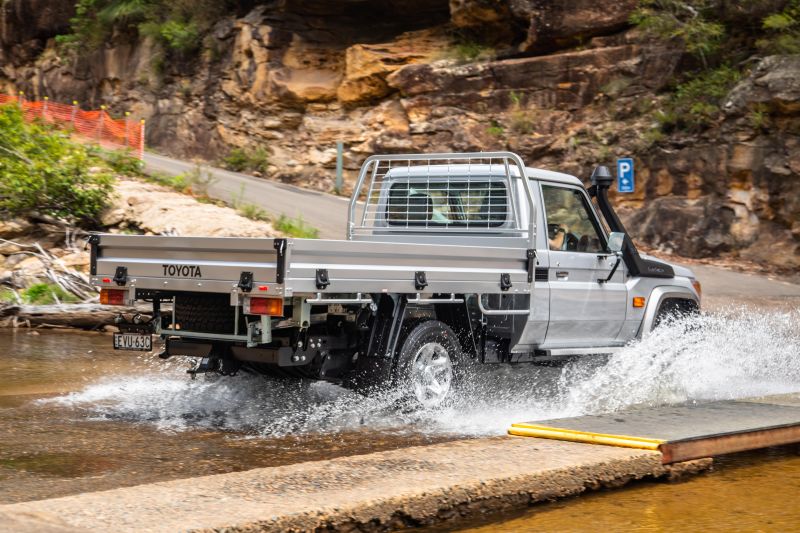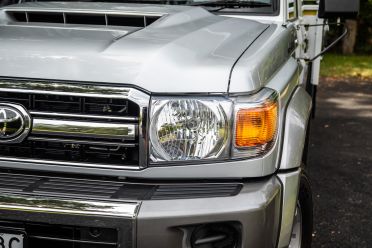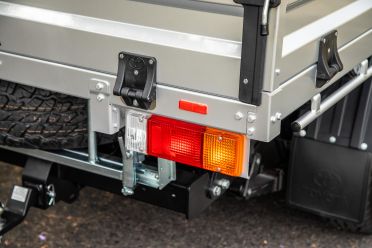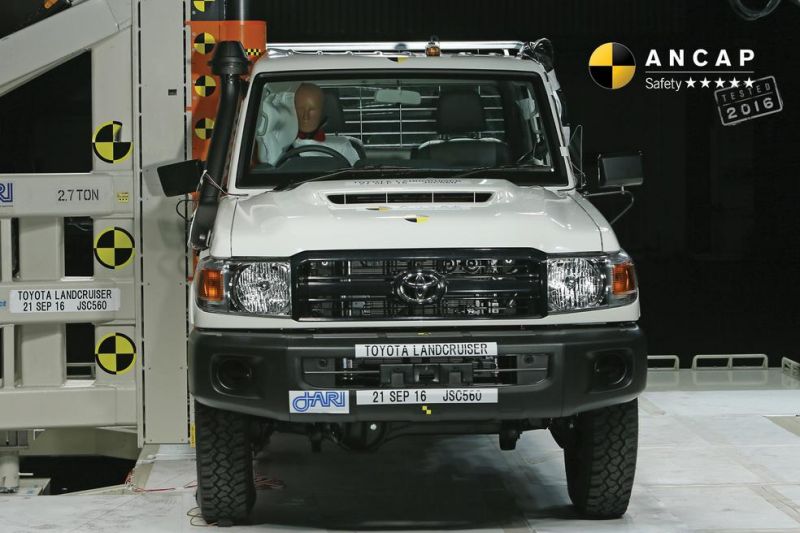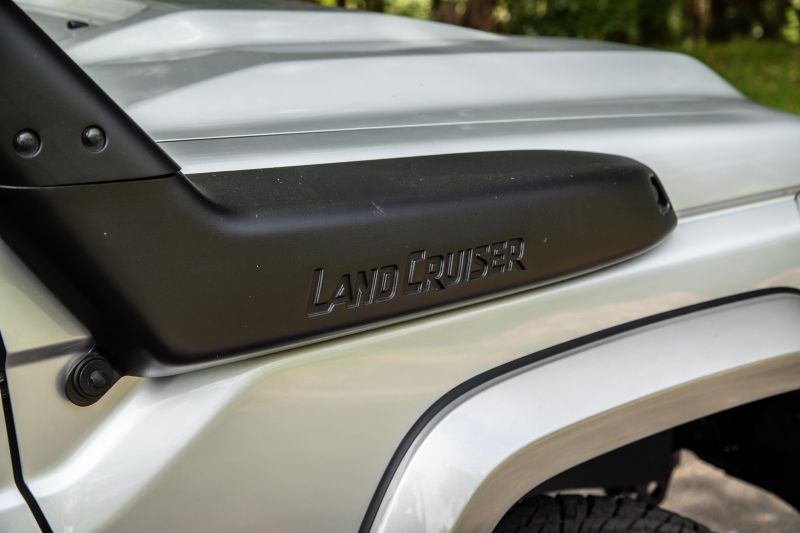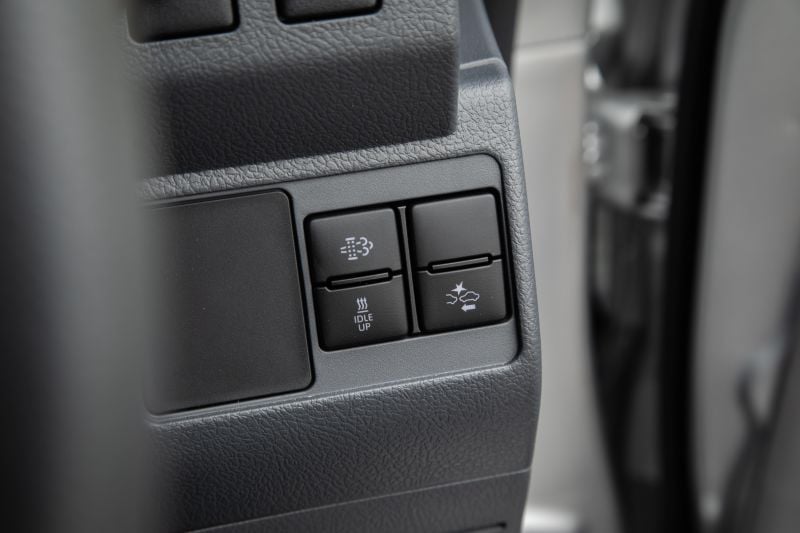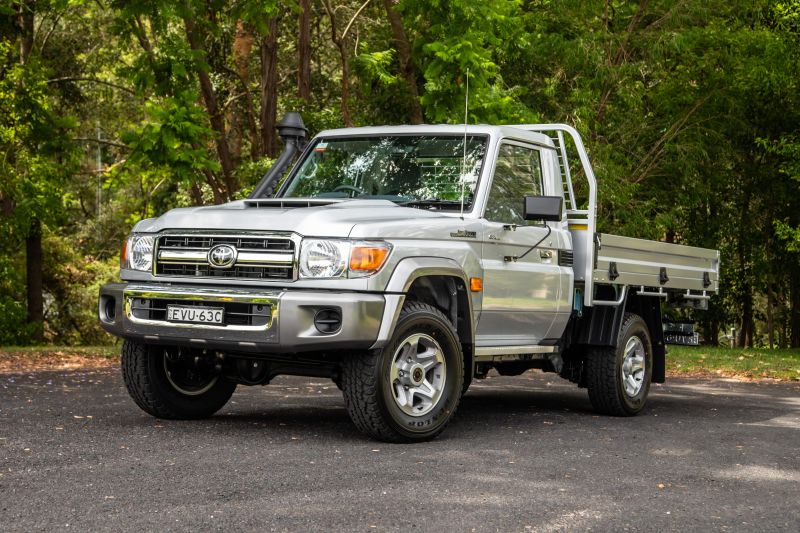The Toyota LandCruiser 70 Series line-up has been updated for 2023 and beyond, with some crucial improvements to safety technology and a couple of adjustments that make this workhorse range now even more appealing than before.
As if it needed that – Toyota has closed the order books for this vehicle because it is in such high demand that the brand simply cannot keep up with the orders. Delivery times are rumoured to have blown out to four years. Yikes.
So, why update it? And what’s changed? Well, along with it finally getting autonomous emergency braking (AEB) with pedestrian and cyclist detection, the brand also bumped the gross vehicle mass (GVM) to 3510kg across the entire model line.
Now that might seem like a boon for buyers, but it’s also a clever move from Toyota, as the shift up in GVM beyond 3500kg means the 70 Series line is now considered a light truck (medium goods vehicle), and had Toyota not made that GWM upgrade, the vehicle may have faced the axe because of Australian Design Rules (ADR) around side impact protection.
Prices went up by $1600 for all 70 Series models, but Toyota Australia knew it couldn’t afford to look this gift horse in the mouth, so it invested to ensure this cash cow remained a part of its business. Enough farm animal references.

How much does the Toyota LandCruiser 70 cost?
Too much, it would be fair to argue. This is a very pricey workhorse ute, and doesn’t offer any of the mod-cons, comfort items or luxury inclusions that you get if you’re spending this kind of money on a dual-cab pick-up like a Ford Ranger.
One could argue, however, that you’re paying for a reputation, that this is a vehicle of renown with amazing credentials for longevity, durability, toughness and capability. Yep, it is. But it’s still not cheap.
This is also something of a moot point, since the Toyota LandCruiser 70 Series range isn’t even available to order for the first half of 2023.
The brand has put a halt to new orders for it, and there are rumours of waiting times stretching out beyond 12, or even 18, months.
As such, the list of MSRP prices (before on-road costs) below are somewhat indicative in nature at the the time of publication.
2023 Toyota LandCruiser 70 pricing:
Single-Cab (LC79)
- WorkMate – $70,550
- GX – $72,550
- GX w/ Diff Locks – $74,050
- GXL – $74,650
Double-Cab (LC79)
- WorkMate – $73,100
- WorkMate w/ Diff Locks – $74,600
- GXL – $77,200
Troop Carrier (LC78)
- WorkMate – $72,950
- GXL – $76,150
Wagon (LC76)
- WorkMate – $69,000
- GXL – $73,100
The vehicle put through its paces in this review is the 2023 Toyota LandCruiser LC79 GXL Single-Cab Cab-Chassis, so it has a list price of $74,650 plus on-road costs – and then there’s the optional silver paint ($675).
And for those wondering, the tray for cab-chassis models is sold separately, so you’ll have to add extra bucks to your budget. Toyota has a range of options for trays in single- and double-cab spec, in general purpose alloy and heavy-duty alloy, general purpose steel, heavy-duty steel and body-colour-matched heavy-duty steel.
We’ll run through the standard inclusions for this grade below, but know that while prices are up across the board, the range is better equipped for safety tech now than ever before. More on that below, too.
What is the Toyota LandCruiser 70 like on the inside?
As I said, if you spent $75K-plus on a dual-cab Ranger, you’d feel like you’d definitely got some luxuries for your cash.
Heck, even a $75,000 HiLux (or a top-spec D-Max or BT-50 with some change in your pocket) makes the 70 Series feel well and truly undercooked.
It’s fitting then, that the GXL has a blue interior trim, with cloth finishing (as opposed to the vinyl fitted to WorkMate and GX grades). The seat trim is not pleasant, in my opinion, and were I to buy a 70 like this I’d be getting a set of fitted seat covers.
There’s carpet on the floor (not vinyl), and the plastics are all of the very hard-wearing variety. The materials are workmanlike, but that’s what this thing is all about.
There are some nice touches, like the cup holder and twin USB charging ports near the shifter, and there’s a covered centre storage bin as well. You can store more stuff behind the seats, as most people do, and there are small bottle holders in the very thin doors.
The controls are hardcore, made to never be broken. The air-con system – now standard; it used to be optional until very recently – is super, and the blower cools down the cabin quick-smart.
There’s a 6.0-inch touchscreen media system, which includes sat nav on all grades these days, but don’t go thinking you’ll plug your phone into the USB port on the edge of the screen and have Apple CarPlay or Android Auto start up. Neither are offered in the 70 Series.
Small consolation; there are a CD player, Bluetooth phone and audio connectivity, and AM/FM radio, but only two speakers for the stereo in cab-chassis models.
What’s under the bonnet?
It’s a big part of the appeal, the 4.5-litre turbo-diesel V8 engine under the bonnet of the 70 Series, because it’s basically your only option for this sort of powertrain unless you’re spending a whole lot more on a US truck.
This engine is known for its low-stress character, and with just 151kW of power (3400rpm) and 430Nm of torque (1200-3200rpm), it’s easy to see why.
Those outputs mean that this 4.5L V8 produces less power and torque than the LDV T60, which runs a comparatively tiny 2.0-litre four-cylinder turbo-diesel but pushes out 160kW and 500Nm – I know which engine I’d bet my life on lasting longer, though…
The LandCruiser 70 range still only comes with a five-speed manual transmission. It’s four-wheel drive, with a second shifter to choose between 2H, 4H, and 4L. The GXL has front and rear differential locks as standard, too.
Towing capacity is 750kg for unbraked trailers, and up to 3500kg braked. For context, the 6.6-litre turbo-diesel V8 in the GMSV Chevrolet Silverado produces – wait for it – 332kW and 1234Nm. That is not a typo. And it’ll tow 4.5 tonnes.
How does the Toyota LandCruiser 70 drive?
It’s not made for urban driving or city duties, so don’t expect it to do its best work in those sorts of scenarios.
My testing included mainly that sort of driving, with a bit of higher speed unsealed roads thrown in, and it certainly felt more at ease in the bush than in the car park at Big W.
The big tick for the drive experience is the V8. It’s so easy-going and yet still so grunty that it makes for fuss-free progress, especially without anything loaded in the tray.
Now, for context; I had a long-term 70 Series back in the CarAdvice days, and during that time I loaded the tray up with more than a tonne of firewood, and four-wheel drive out of the location where I chainsawed those trees with my father-in-law.
And suffice to say, I didn’t think I needed to retread that path. This thing will go further than you’d expect it to in four-wheel drive, and with the diffs locked, tyre pressures down and low-range engaged, it’s very bloody close to unstoppable – even with a load on board.
With the improved gross vehicle mass (GVM) – now 3510kg across the board – this “light truck” certainly has the credentials for that labelling. For instance, the payload capacity is 1315kg for the GXL Single-Cab Cab-Chassis.
The five-speed manual still feels a gear short at freeway speeds, and while there is likely zero chance Toyota will cave in and add a new six-speed gearbox – let alone an automatic transmission option – it does get the job done. The throw is long, the action is notchy, and the clutch is heavy. How very refreshing.
The 70 Series’ steering is often described as ‘vague’ or ‘aloof’, meaning you probably don’t know what’ll happen when you turn the wheel.
That’s a fair assessment, because it has a bit of play to it on the straight-ahead, and it’s pretty lazy at low speeds. At higher speeds on the open road it’s predictable enough, but don’t go pushing it too hard.
The bigger problem is the turning circle. Cab-chassis models have a 14.4m turning radius, and that means along with a lot of arm work to get the thing around, you might end up needing to do a five- or seven-point turn where a three-pointer would otherwise usually suffice.
The ride was good considering there was no weight over the rear axle for my testing, and from experience I know it just gets squishier as you add kilos. Much like me.
However, the biggest thing that reminded me I was stepping back to a different time was the amount of noise intrusion into the cabin.
With that honking diesel V8, sheer body lines, a near-upright windscreen and a snorkel that’ll make your dad sound like a quiet snorer, this thing is really, really loud at highway pace. Maybe a couple of extra speakers would help take buyers’ minds off that, Toyota?
What do you get?
If you’re expecting a comprehensive list of standard equipment, you’re going to be sadly disappointed.
Here’s a rundown on what you get in the 70 Series. Note – no model even scores auto headlights, auto wipers, or daytime running lights; and all come with a proper key with a separate remote central-locking fob.
LC70 Workmate highlights:
- 16-inch steel wheels
- Halogen headlights
- 6.0-inch touchscreen
- Satellite navigation
- 2-speaker stereo system (4-speaker for Wagon)
- 3 x USB ports
- 12-volt outlet
- Vinyl seat trim
- Vinyl floor trim
- Snorkel
- Steel side steps (aluminium on Double-Cab, Wagon)
- Front mud flaps
- Black front bumper
- Air-conditioning
- Floor mats
- Rear barn door (Wagon and Troopy)
LC70 GX adds:
- 16-inch alloy wheels
- Over-fender flares
- 4-speaker stereo
LC70 GXL adds:
- Chrome and painted front bumper
- Chrome and painted rear bumper (Double-Cab, Troopy)
- Chrome grille
- Chrome roof drip rails
- Cloth seat trim
- Cloth door trim
- Carpet flooring
- Power antenna
- Front fog lights (N/A Single-Cab)
- 4-speaker stereo (Troopy, Wagon)
There’s more to it, too – read the safety section and you might be surprised that only one body-type scores the full complement of crash protection gear.
Is the Toyota LandCruiser 70 safe?
It’s safer now than ever before. And the single-cab remains the safest option of the lot. Let me explain.
The 2023 update included additional advanced active safety technology.
All versions of the LC70 now get autonomous emergency braking (AEB) that works from 10-160km/h for car detection, while there is also pedestrian detection and daytime cyclist detection that works between 10-80km/h.
That means this is essentially the same forward collision avoidance tech that is used in the LandCruiser 300 Series – apart from the top speed (AEB works up to 180km/h for the 300 Series, and I don’t think you’ll get a 70 to hit that speed).
However, there are none of the other advanced safety technologies such as lane keeping assistance, blind-spot monitoring (hard to do in a vehicle that still doesn’t even have electric mirrors), rear cross-traffic alert, or rear AEB.
How much does the Toyota LandCruiser 70 cost to run?
Every version of the LandCruiser 70 Series – no matter the body type or variant – has an official combined cycle fuel consumption number of 10.7 litres per 100 kilometres.
You might achieve that if you go easy on it, don’t load up anything in the tray, or spend most of your time between 50km/h and 80km/h.
But in reality, you’re likely to see a similar return to what I did – 12.2L/100km. Again, not loaded, not towing, not off-roading.
Steel yourself when you go to fill the thing up, though, as the 130-litre tank (180L for the Troopy) will be costly to keep full. You could, in theory, pay more than $300 from empty, and that’s not even for the Troopy’s big tank!
High costs are going to be a bit of a theme for this rig, though – it’s not cheap to buy, nor is it going to be cheap to run; and the ownership factor is hardly budget-friendly, either.
With servicing due every six months or 10,000km, at a cost of $425 for the first three years/60,000km, there’s a reason these powertrains are known for their reliability.
It also has a five-year/unlimited kilometre warranty, but up to seven years for the powertrain if you maintain logbook servicing.
Roadside assistance is not included for any Toyota, so that’s another cost you’ll have to tack on if the NRMA has anyone near your farm or mining property.
CarExpert’s Take on the Toyota LandCruiser 70
It’s old, nearly impossible to buy one, and it’s only going to suit certain people in particular lines of work.
But it’s also hard not to be won over by the charm of this big rig.
With the incremental improvements Toyota continues to make, there is no doubt the order books will continue to run hot for the LandCruiser 70 Series.
Click the images for the full gallery
MORE: Toyota LandCruiser 70 orders remain closed
MORE: Everything Toyota LandCruiser 70





